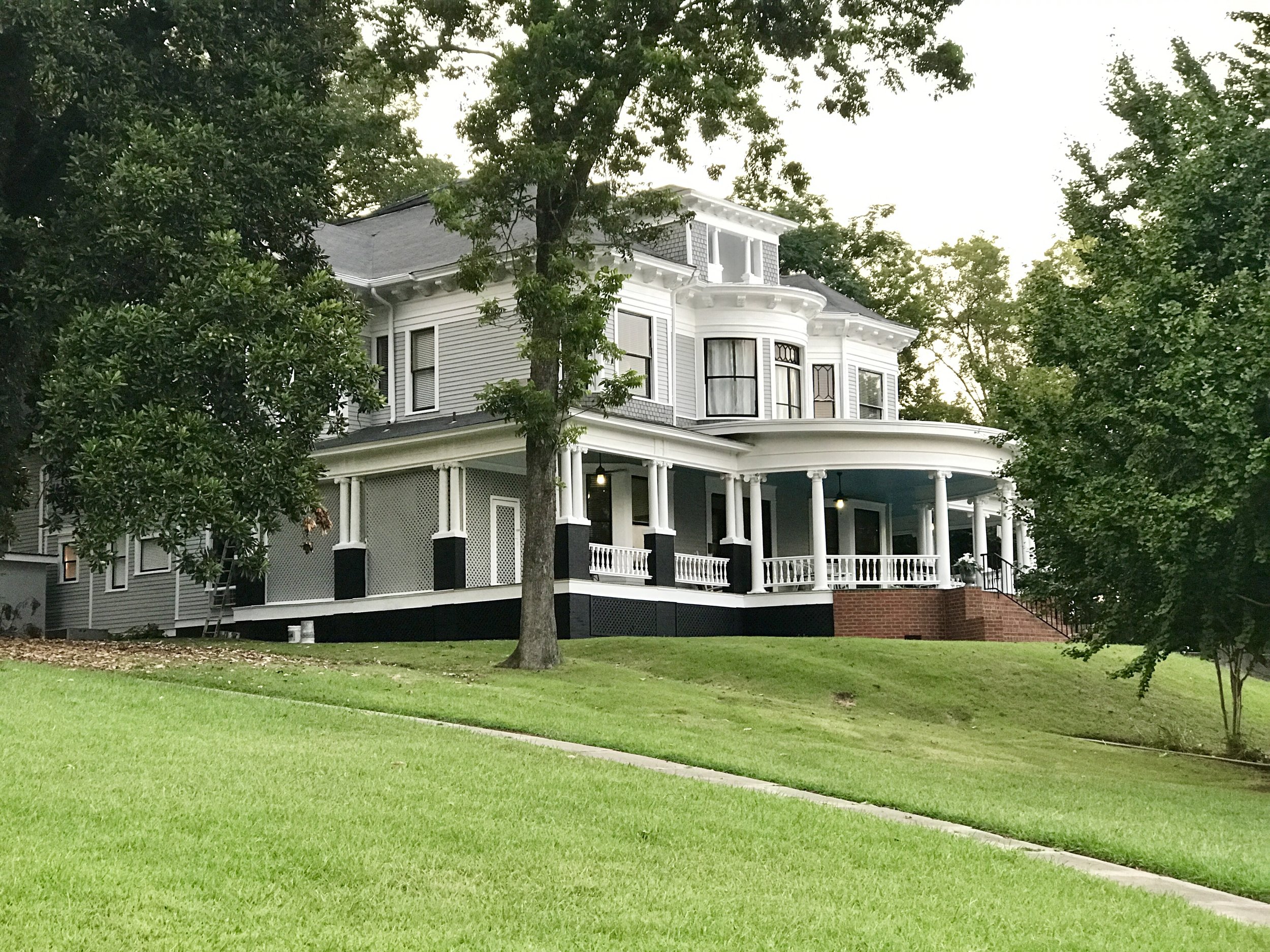In 1885 Mr. and Mrs. William A. Short came to Helena from Mobile, Alabama.
Mr. Short had been engaged by the Howell Cotton Company of Little Rock, Arkansas to conduct a branch of their business in this city. In 1888, W.A. Short started his own cotton business and two years later changed the firm's name to W.A. Short and Company. In 1895, W.A. Short and Y.F. Harrington formed a business in cotton second to none in this part of the country. Their business totaled over $5,000,000 for the season of 1902-1903. W. A. Short and Company invaded other markets, establishing branch offices in Pine Bluff, Brinkley, Newport, Cotton Plant, Clarendon, Forrest City, Holly Grove, Marianna, Memphis, and Osceola. A newspaper from 1904 printed the following, "W.A. Short and Y.F. Harrington have a genius for organization and are men of ability, industry, and wide capacity. In fact, they are among the leading business spirits of Helena, Arkansas."
In 1904 Mr. William Short built this home which is now known as The Edwardian Inn. The house was built by the Clem brothers, who were believed until just recently to have been from St. Louis, but have now been determined to have been from Fordyce. They also built several other homes in the Helena area, including two "sister houses," the Short-Bieri house and the West-Webb house. The Edwardian Inn remained the family home until about 1920, after which time various families owned or rented it.
In the early 1980’s, the home underwent an extensive restoration and opened as The Edwardian Inn Bed & Breakfast. Much care was taken to maintain the historic integrity of the home, and “Big Ed” is now recognized as one of the Delta’s premier Bed & Breakfast’s.
The Edwardian Inn is an outstanding example of fine homes that were built in Helena around the turn of the century. The quarter-sawn oak paneling that is used extensively throughout the house may have come from the 24 sawmills that were in the area at the time. Expert craftsmen in Chicago made the nine original mantels in the house. Eight of them remain in place with the ninth being used as the front desk for the inn. Wood carpeting made in Germany of 36 different kinds of woods are used throughout the first floor. The stairway is of oak and is in excellent condition. It was constructed by the Clem brothers with the applied carving and mill work coming from Chicago.
The Short Family
The first floor is noted for the beautiful wood carpeting which was imported from Germany. The detail work in the flooring is outstanding and features numerous different types of woods. Most of the door and window hardware is original to the house as are the transoms above the doors and on the front and side entrances. Two French Drop Chandeliers dating to 1915 adorn the front foyer. All rooms have individual controls for the heating and air conditioning as well as ceiling fans. Each guest room has a connecting private bathroom.
As you walk around the Edwardian you will see that many of the rooms are named after Civil War Generals, and regionally relevant people. To find out more information about specific people, please see below.
A history of the room names:
Thomas Hindman (Formal Dining)
General Cleburne (room 2)
General Charles Adams (room 6)
General Dobbins (room 7)
General Tappan (room 9)
Marquette & Joliet (Rm 11&12)
Rooted in Civil War history
Helena was occupied by Union Army forces in 1862, and used as a staging point for supporting troops in the Siege of Vicksburg, MS which began in May 1863. These forces constructed a ring of defenses around the city to guard the major land approaches, and control the high ground overlooking Fort Curtis, its major base just west of the city. The Union Navy controlled the Mississippi, with the USS Tyler stationed nearby. The defenses built by the forces commanded by General Benjamin Prentiss at Helena included artillery batteries, rifle pits, and barricades of trees.
Confederate leaders in Arkansas planned an offensive in June 1863 to retake Helena and cut the Union supply line, relieving the pressure on besieged Vicksburg. Under the overall command of General Theophilus H. Holmes, Confederate forces launched an attack on Helena on July 4, 1863, the same day that Vicksburg surrendered to Union forces. Prentiss ordered the construction of four batteries in response to increased Confederate activity in the surrounding area in late June. The coordination of the separate elements of the Confederate attack were frustrated by felled trees laid across the approach roads by the defenders, and were eventually subjected to fire from all four batteries, as well as from the supporting Navy ships. Although the Confederates successfully took Battery C, fire from the other three drove them back. An assault on Battery D reached its rifle pits, but got no further. The Confederates suffered more than1,600 casualties, to 239 for Union forces.
Hindman Hill: Battery D
The Edwardian Inn is nestled at the mid-point of Hindman Hill. Battery D is probably the most well preserved of the Helena batteries.
Battery D stands on Hindman Hill, southwest of downtown Helena, and overlooked the main road between Helena and Little Rock. Of the four batteries, it is the one that is the best preserved, with its earthworks and rifle pits still evident near the crest of the hill. The battery was manned by Union forces from Iowa, Missouri, and Indiana, and was the target of a Confederate assault launched at daybreak by Arkansas forces commanded by Brigadier General James F. Fagan. They successfully penetrated three levels of rifle pits despite withering fire from batteries C and D. Reinforcements sent to support the assault from Battery C were repulsed, and Fagan was ordered to withdraw. His orders did not reach all of his men, however, and a pocket of Confederates was surrounded and captured as a result.







